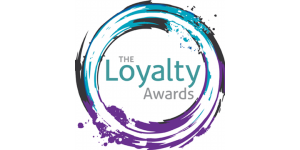10 Aug

The bank loyalty program, often known as a financial services loyalty program, offers clients incentives and efficient rewards. In fact, according to a study, 81% of today’s banking customers expect membership bonuses or loyalty programs. Utilizing loyalty programs for financial services is practically required if you want to exceed consumer expectations and increase preferability. Let’s examine how bank loyalty points and reward programs increase customer loyalty.
Financial Services Loyalty Programs: What is it?
As a marketing strategy, the financial services loyalty program aims to increase brand love and frequency of purchases by offering exciting rewards to banks and insurance companies. Therefore, this program gives modern banks a competitive advantage. On the other hand, some features that distinguish this strategy from more traditional reward systems can be listed as follows:
- Customers no longer buy items in the conventional sense; thus, financial and bank loyalty programs encourage participants to purchase using credit cards or promote service bundles like loans or mortgages.
- Enrollment in financial loyalty programs is constrained due to their uniqueness. People must have an active account to join; otherwise, they cannot advance.
- Companies in this sector have fewer chances to engage with their devoted customers. Typically, clients can contact them for only contract renewals. Because of this, loyalty programs place a high priority on developing new touchpoints.
- Last but not least, financial and bank rewards programs are frequently used for advertising content, informing customers about current deals, and increasing the brand’s online visibility.
With the features listed above, you can join financial services loyalty programs.
Challenges to Customer Loyalty in Financial Services
In the dynamic landscape of financial services, fostering financial services loyalty programs presents unique challenges, particularly in the context of loyalty programs. These are:
- Elevated Customer Expectations: Customers expect highly personalized and seamless experiences in today’s digital age. This requires financial services to leverage advanced analytics and AI to tailor their loyalty programs effectively. However, implementing these technologies comes with the challenge of ensuring robust data security and adhering to strict privacy regulations. Balancing personalization with privacy is key to maintaining customer trust and loyalty.
- Competition from Fintech Startups: The rise of fintech startups has significantly intensified competition in the financial services sector. These startups often excel in offering innovative, user-friendly solutions, which can be more appealing to the tech-savvy customer base. Traditional financial institutions must match these innovative offerings and differentiate their loyalty programs by integrating unique value propositions to retain customer loyalty.
- Homogeneity of Financial Products: The financial services loyalty programs often need more differentiation in products and services. This homogeneity makes it challenging for institutions to stand out solely based on their offerings. To overcome this, loyalty programs must extend beyond transactional rewards and focus on creating emotional customer connections. This can be achieved through value-added services, exclusive benefits, and personalized customer experiences that resonate more deeply with the clientele.
Types of Loyalty Programs for Banks and Financial Services
A successful loyalty program includes unprecedented features to serve its customers best. However, a bank needs some strategies to have high-performing financial services loyalty programs. These are stated below:
- Cashback Rewards
- Benefits Limited to Certain Accounts
- Unique Member Benefits
- Participation-Based Rewards
- Elite Club Membership
- Tiered Loyalty Programs
1. Cashback Rewards
Cashback rewards programs are a straightforward and highly attractive offering from banks. Customers earn a percentage of their spending back as cash rewards, which can be credited directly to their account or applied to their credit card statements. For example, a bank might offer 1% cashback on all purchases, with higher rates, perhaps up to 3-5%, in specific categories such as groceries, dining, or fuel. This incentivizes customers to use their bank cards more frequently, knowing that everyday purchases lead to tangible rewards. Therefore, financial services loyalty programs give better results.
2. Benefits Limited to Certain Accounts
The exclusivity of financial services loyalty programs benefits to certain account types presents both a challenge and an opportunity. While these benefits, such as account upgrades, renewals, or exclusive prizes, are accessible only to registered and active clients, they create a sense of exclusivity and privilege. This approach can incentivize customers to upgrade or maintain premium accounts, increasing customer engagement and perceived value. However, balancing this exclusivity with inclusivity is crucial to avoid alienating a broader customer base. The key is to offer tiered benefits that cater to different customer segments while maintaining a sense of exclusivity for higher-tier members.
3. Unique Member Benefits
Implementing unique benefits within a financial services loyalty program can significantly enhance its appeal. For instance, offering priority service at bank branches or bonus points for engaging with the bank’s content, like subscribing to a newsletter, can improve customer satisfaction. Additionally, providing free banking services can be a strong incentive. These unique benefits improve the customer’s banking experience and foster a deeper connection with the institution. The challenge lies in continuously innovating these benefits to keep them relevant and attractive to members.
4. Participation-Based Rewards
Encouraging active participation through rewards is an effective strategy in financial services loyalty programs. Banks can increase customer interaction and loyalty by offering rewards for attending online workshops, watching webinars, taking quizzes, or engaging in online games. This approach incentivizes learning and engagement with the bank’s resources and allows for a more dynamic and interactive customer relationship. The challenge here is to create engaging, valuable content that genuinely interests customers, ensuring that participation feels rewarding rather than obligatory.
5. Elite Club Membership
Creating an elite club within financial services loyalty programs can significantly enhance its perceived value. Offering this exclusive membership for a fee allows customers to self-select into a more prestigious tier, demonstrating their willingness to invest in a higher status. This strategy generates additional revenue and creates a more segmented and targeted reward approach, ensuring high-value rewards are reserved for engaged and loyal customers. The challenge is maintaining the exclusivity and prestige of the elite club while ensuring that other program members feel valued and noticed.
6. Tiered Loyalty Programs
Tiered loyalty programs are designed to reward customers based on their level of engagement with the bank. These programs often have levels or tiers, each offering progressively better benefits. Higher tiers offer customers higher interest rates on savings accounts, lower loan rates, waived service fees, or exclusive access to premium banking services and products. This system motivates customers to consolidate their banking and financial activities with the institution to reach higher tiers.
Successful Bank Loyalty Program Examples
Banks increasingly turn to financial services loyalty programs to retain customers and enhance their banking experience in the evolving financial services landscape. These programs are designed to reward transactions and foster a deeper, more personal relationship with customers. Let’s explore some successful examples of bank loyalty programs.
1. Citibank – Citi ThankYou Program
Citibank’s Citi ThankYou program stands out for its flexibility and range of rewards. Customers earn points through credit card usage, which can be redeemed for various rewards, including travel, merchandise, and cash back. The program’s success lies in its ability to cater to a diverse customer base with different spending habits and reward preferences.
2. Bank of America – Preferred Rewards
Bank of America’s Preferred Rewards program is another excellent example of a financial services loyalty program. This program offers tiered benefits based on the customer’s account balance. The rewards include interest rate boosters on savings accounts, discounts on loans, and higher cashback on credit card purchases. This program effectively encourages customers to consolidate their banking and investment accounts with Bank of America, deepening their relationship.
3. Wells Fargo – Go Far Rewards
Wells Fargo’s Go Far Rewards program is notable for its comprehensive approach. Customers earn points not just through credit card usage but also through other banking activities. This financial services loyalty program offers various redemption options, including travel, gift cards, and online auctions. It also allows customers to pool rewards with family and friends, adding a community aspect to the program.
You can reach our previous article from https://www.apexloyalty.com/using-a-b2b-loyalty-program-for-your-supply-chain/.











